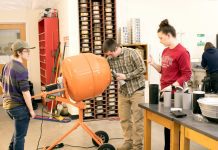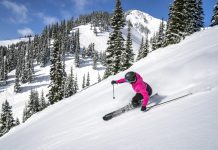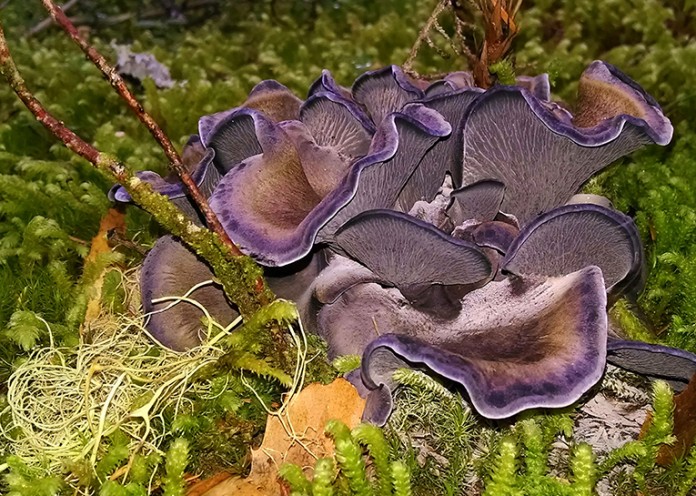By Margo Greenman
 Fall in the Pacific Northwest is a beautiful time to get out and enjoy the magnificent outdoors of our locale. Rain or shine, there are plenty of ways to experience a variety of outdoor activities like kayaking, hiking, biking – and even foraging – around the South Sound.
Fall in the Pacific Northwest is a beautiful time to get out and enjoy the magnificent outdoors of our locale. Rain or shine, there are plenty of ways to experience a variety of outdoor activities like kayaking, hiking, biking – and even foraging – around the South Sound.
With cooler temperatures and moisture setting in, South Sound-area forests are brimming with fungi for local mushroom lovers to find and pick. President of the South Sound Mushroom Club, Chris Herrera, says conditions in the Pacific Northwest are perfect for growing some rather spectacular ‘shrooms.
Because mushroom picking can be a tricky – and sometimes dangerous – activity, Chris is sharing some of his best tips to help get you started on your mushroom picking adventure around the South Sound.
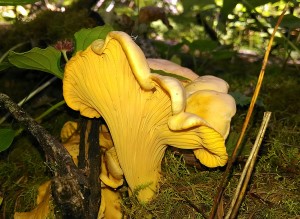
Come prepared
Before you head out on your first mushroom picking expedition, it’s important to do a bit of research first. Chris recommends several books that will help you understand how to safely identify and find different types of edible mushrooms.
Chris says his favorite mushroom guide for local picking is Mushrooms of the Pacific Northwest by Steve Trudell and Joe Ammirati. This guide features descriptions and photographs of more than 450 mushroom types found growing in Washington, Oregon, southern British Columbia, Idaho and westernmost Montana, with an emphasis on low-to-mid elevation forests in Washington and Oregon, to help you find some of the regions best and most sought after mushroom varieties.
Chris says two other guides he likes to keep in his back pocket are Mushrooms Demystified and All That the Rain Promises and More, both by David Arora.
You’ll also want to dress for the occasion, so be sure to wear appropriate attire, including waterproof gear if foraging in the rain. It’s also wise to bring a map, GPS and compass along when exploring unmarked trails and other areas you haven’t been before.
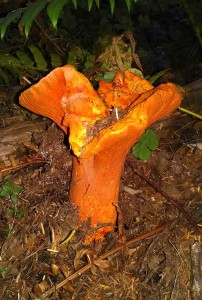
While mushroom picking is a free activity, Chris also recommends contacting the park or forest that you plan to pick at ahead of time to see if a free use permit is required, and what the picking limit is. “There’s nothing worse than turning a great day picking into an uncomfortable encounter with an enforcement official doing their job,” says Chris.
Join a group
Chris says its important to be safe while foraging for mushrooms in the forest, which is why you should never go mushroom picking alone – especially if it’s your first time out. If you don’t know anyone who shares your interest for mushroom picking, Chris recommends joining a local club like South South Mushroom Club. Joining a club is a great way to meet others who share a similar interest in mushroom picking. “When you join a group like the South Sound Mushroom Club, you are surrounded by people like yourself,” explains Chris. “Joining a group gives you the opportunity to interact with and learn from experienced mushroom hunters. This interaction alone, can increase your willingness, and enjoyment, to learn.”
Identification is key
Because many edible mushrooms often resemble poisonous types of mushrooms, Chris says it’s extremely important that you are 100 percent certain of the mushroom’s identity before consuming. Bringing along a guide like the ones mentioned above can ensure that you are identifying correctly, and Chris says it’s important to, “Never rush into eating a new mushroom. When first trying a new mushroom, only eat a small amount to start with, and don’t mix them with any other types of mushroom.” Following these steps will help prevent ingestion of poisonous mushrooms.
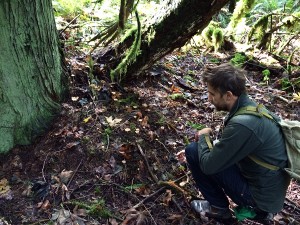
Have fun
The most important part about mushroom picking is that you simply have a good time. Mushroom picking isn’t just about collecting and eating delicious mushrooms, it’s also about the experience you have while you’re out there in the woods, and the information you learn throughout the process. “My favorite thing when eating or giving away mushrooms, is knowing that I used my knowledge of mushroom habitat and weather patterns to go out and find the delicious mushrooms that I am enjoying,” says Chris. “It’s that feeling of accomplishment, knowing that I was able to find what I set out to find through knowledge and hard work.”
To learn more about local mushroom picking and how to get involved with a group, visit the South Sound Mushroom Club’s website here.








